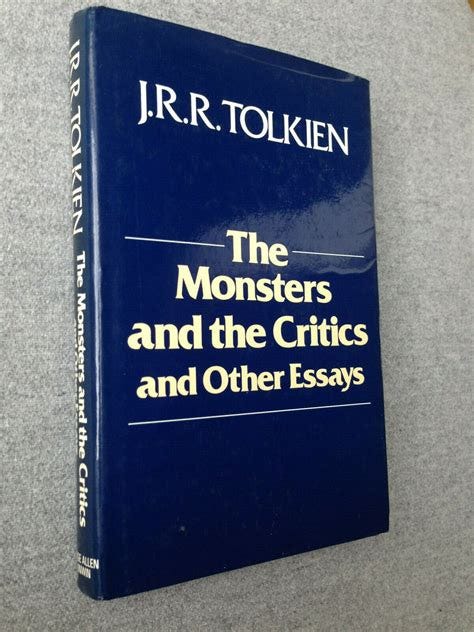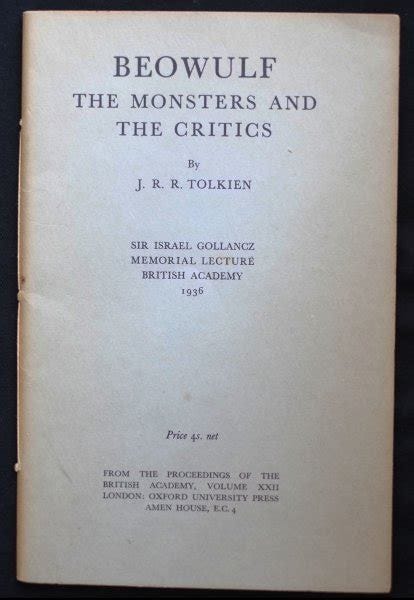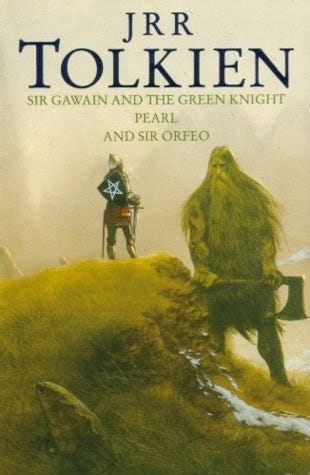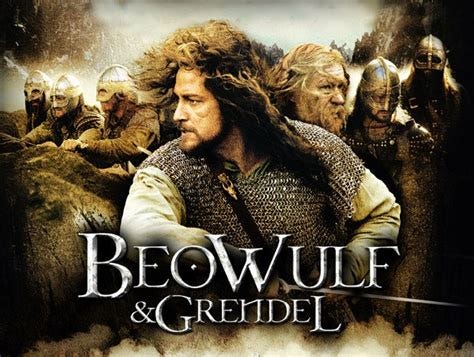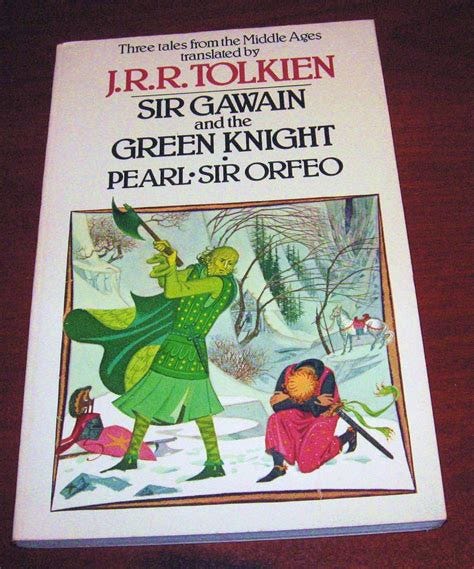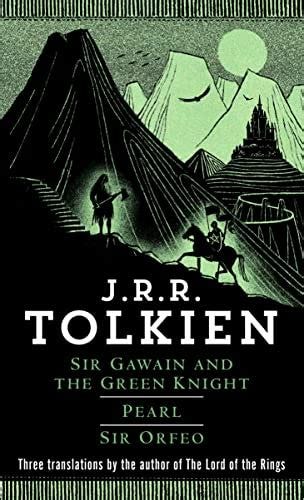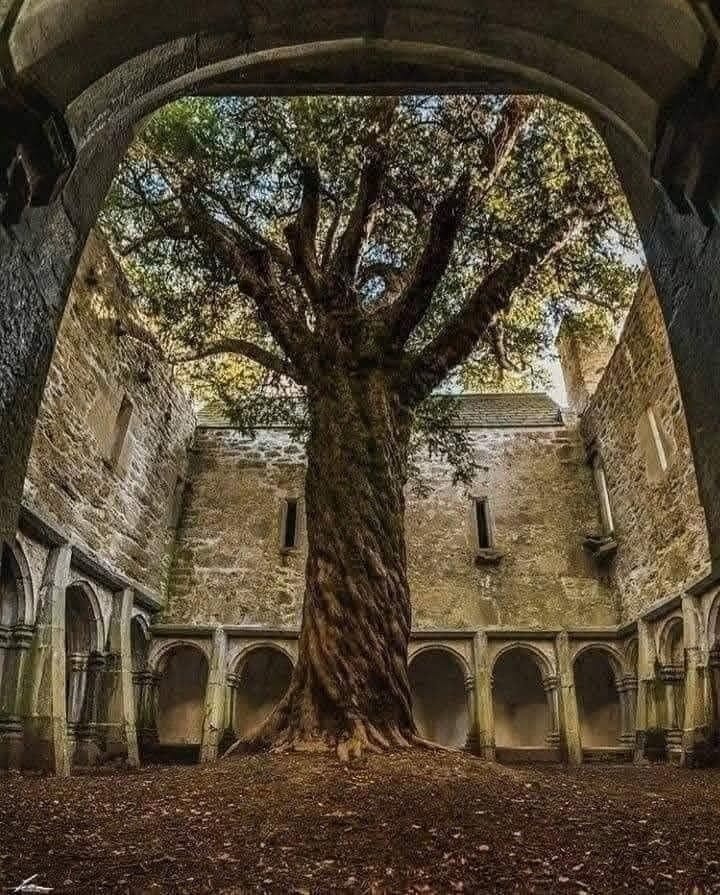Tolkien: The Monsters + the Critics
Reviewing his definitive essay collection: how a linguist world-builds
My play on words last entry, Tolkien: The Missives + the Successors, likely met with neither nod nor notice. But I figured I’d revisit this scholarly anthology. Finding out at the age of twelve from the back covers of "The Lord of the Rings" that there were medievalists and that Tolkien was one, I vowed to study what he did. While unlike "Tollers" my doctorate did not lead me to a donnish tenure on an ivy-draped quad, I always admired the humanity and grace not only of his famed fiction but his patient letters and insistent essays. Re-reading his collected criticism twenty-five years after it first appeared, its engrossing paths through scholarly debates make occasional detours permissible and often worthwhile. As with Tolkien's "Secondary World" of Middle Earth, as a "sub-creator" not only of probably our greatest modern mythology but as a rigorous (if rambling in his donnish digressions) scholar, you find in "Monsters" much evidence that without his deep understanding of language, that he'd never have been able to convince you of the essential reality of his imagined realms.
This knack, as T.A. Shippey, his successor in his position at Oxford, has argued (see previous post) in "The Road to Middle Earth," depends on "asterisk reality," or what JRRT calls here more delightfully "star-spangled grammar." (237) As his son and editor Christopher explains: "the reference is to enquiry into the forms of words before the earliest records; in those studies the conventional practice is to place an asterisk before hypothetical, deduced forms." (n. 3, 240) This may seem dry to non-academics or those lacking a fascination with philology. But for Tolkien and his audience, the invention of sustainable elements of his myth depended on the languages he concocted-- and vice versa.
In his "A Secret Vice" (1931) Tolkien elaborates-- if a bit unevenly in this essay never published-- how assembling "art-language" relates to crafting mythology: "to give your language an individual flavor, it must have woven into it the threads of an individual mythology, individual while working within the scheme of natural human mythopoeia, as your word-form may be individual while working within the hackneyed limits of human, even European, phonetics. The converse indeed is true, your language construction will breed a mythology." (210-11) This is why Tolkien outlasted so many of his predecessors, peers, and imitators. He knows the deep structures of the language and from the combination of creativity and limitation inherent in how what we speak conveys what we conjure; he built Middle-Earth upon this rich foundation, half-excavated, half-hidden.
This trove, as his best-known essays here on "The Monsters & the Critics" and "On Translating Beowulf" show, depended on perceiving that Old English poem as such, more than merely a word-hoard to be ransacked by historians and professors for linguistic traces of Geats and thanes. It pivots on a balance between what its Christian author could reach back from, into the recently-departed pagan past, and forward into, the fatalistic yet salvific quality of heroism infused by morality. The codes of the Saxons meshed with those of their Catholic evangelists, and Tolkien in these early critiques moved the study of the poem away from archeology into poetics.
He did the same for "Sir Gawain & the Green Knight." Which even hit the big screen a few years ago albeit in tidied-up, inevitably slightly “woke” form. Anyway, as Shippey clarifies, that before Tolkien came along with pioneering colleague E.V. Gordon in 1925, this now-fundamental text within the Middle English curricular canon had barely been lauded; same with elegiac “Pearl,” desultorily translated alongside “Gawain” and a delightful “Orfeo” by Tolkien, posthumously appearing only in 1975.
He corrects earlier scholars who mined the verse only for traces of earlier legends; he reminds us of its inescapably Christian morality, which (as in Beowulf; I must add as a UCLA veteran of Old English that this heavy poem’s pace can’t transmit dim beauty embedded in kenning word-clusters and alliteration, assonance and severity, little stays shone into our faint renderings in Latinate-not-Teutonic voice; all the same, his clunky 1926 translation’s inevitably reprinted) moves the reader, as does its maker not long past the middle marker of the first millennium A.D., towards a value system based on belief in Sacraments rather than one relying only upon a code of honor or "a game with rules" such as his host expects him to play. The tension between an earthly pursuit and a heavenly mandate enters this drama. In Beowulf, the monsters occupy the center, with youth and old age, victory and defeat, on each end for the hero to face.
For Gawain, the confession-- in Tolkien's perceptive reading-- turns the narrative away from pagan-pursuing or Pentagram chasing into a decision to follow a more "real and permanent" world of what's worthwhile rather than the frivolous folly of "an unreal and passing" court. His "Valedictory Address" gently attacks "the workings of the B.Litt. sausage-machine" at Oxford going on six decades ago. Glad he was spared what the academy's been turned into. My diss. chair as a Rhodes Scholar in 1958 was one of his final research students around the time this address was given. Tolkien had the reputation as a nearly incomprehensible lecturer, so I am unsure if his auditors learned his lesson! Apparently full of mumbles, hesitations, and hobbit-like fumbles.
Tolkien does offer advice for those of us who made it through later expansions of the slaughterhouse that is the Research University today, Oxford or its lesser factories. Perhaps we may find wry if wise counsel as independent scholars and freeway faculty who labor on with few financial or institutional rewards:
"There is no need, therefore, to despise, no need even to feel pity for months or years of life sacrificed in some minimal enquiry: say, the study of some uninspired medieval text and its fumbling dialect; or of some miserable 'modern' poetaster and his life (nasty, dreary, and fortunately short)-- NOT IF the sacrifice is voluntary, and IF it is inspired by a genuine curiosity, spontaneous or personally felt.” (226-27)
The trouble is, then and so much more now, that so many in academia follow the leader into an au courant theory, some adviser's own project, producing but the tired labor dutifully repeated. I originally wrote this review in 2012. Nearly nothing’s gotten better. Outside of perhaps outlier start-ups onsite or online in Christian tradition, either evangelical or conservative Catholic, who marry liberal arts with the usual C.S. Lewis-meets-Tolkien-Charles Williams-Chesterbelloc ilk (although as my review of “Letters” repeats, Tolkien regretted what C.W. had crafted to waylay C.S.L.’s craft.)
To his credit, Tolkien convinced us in his fiction and warned us in his criticism of how language deserved respect, whether we were schooled in the Lit. or the Lang. His lecture on "English & Welsh," delivered the day after publication of "The Return of the King," also encourages us. Language, as "a natural product of our humanity," is native in a profound sense transcending the first one we learned in our cradle.
"Linguistically we all wear ready-made clothes, and our native language comes seldom to expression, save perhaps by pulling at the ready-made until it sits a little easier. But though it may be buried, it is never wholly extinguished, and contact with other languages may stir it deeply." (190) Welsh, for Tolkien, did this along with Gothic, Finnish, Latin and Greek-- among others. He concludes with evoking the sheer pleasure of Welsh. Maybe dormant for many "who today live in Lloegr and speak Saesnag," {translated, in Britain and speak English, using Cymraeg terms predating Teutonic Anglo-Saxon blow-ins} yet there, as with much he mixed from real languages into his mythological vision's purview, for us to find enchantment and satisfaction.
More than once, Tolkien offers his vision of how words can capture a deeper meaning. "You may say green sun or dead life and set the imagination leaping." (219) The power of the adjective to transform the noun, the freshness of nouns coupled in vivid pairs: the structure of the Old English line finds its echo eleven-hundred years later in Tolkien's inheritance, his conception of a linguistic design that, as "On Fairy-Stories" delves-- after byways, detours, and asides-- into deepest, liberates us and arguably provides glimpses of the "eucatastrophe" of the Gospels, the happy ending of the Resurrection Story that two billion men, women, and children wish to be truly true.
Muckross (pig’s wood “as Gaeilge”) Abbey: this stalwart eidetic oak may predate the building of an Irish six-hundred-year-old cloister. Very Tolkien-ish, Platonic power.





